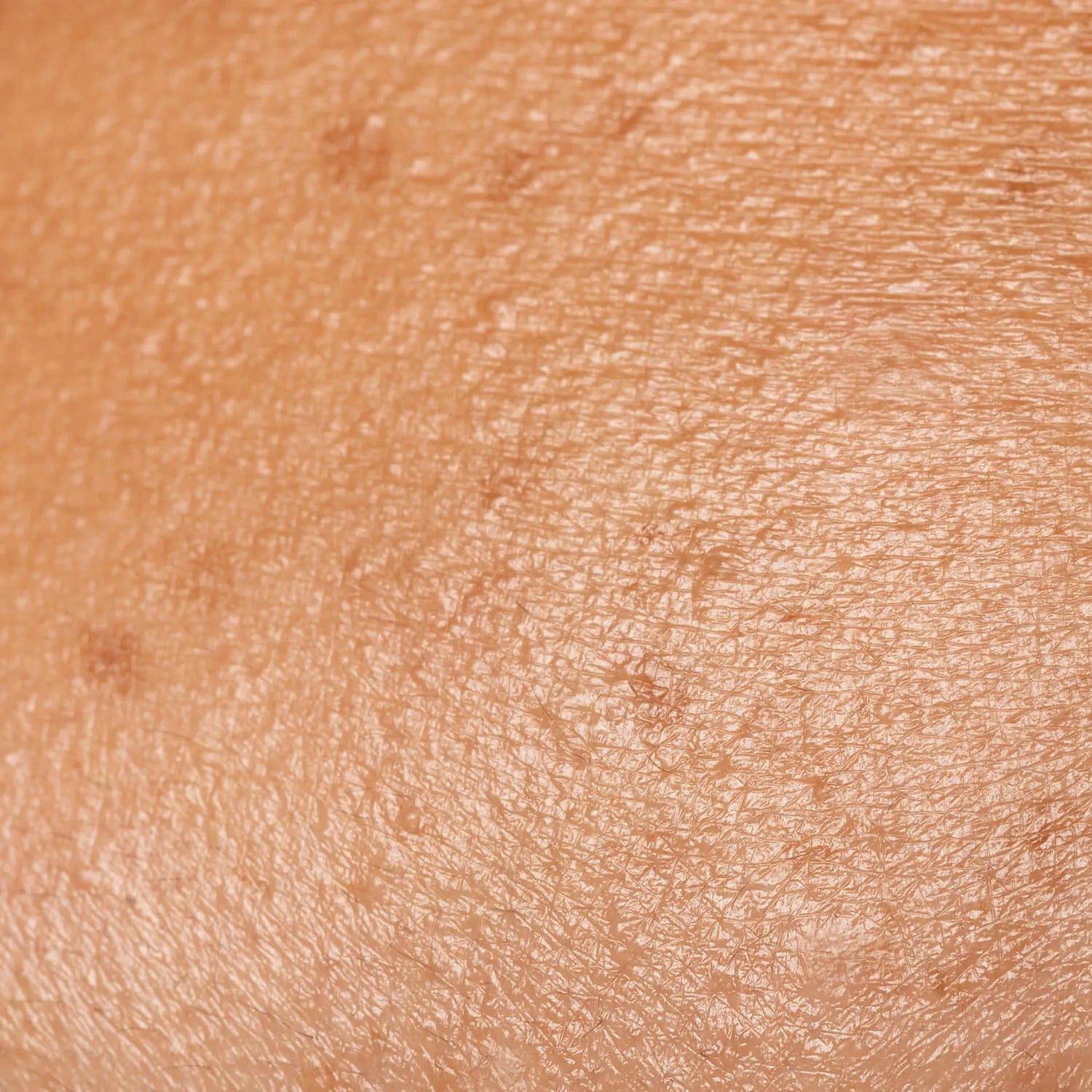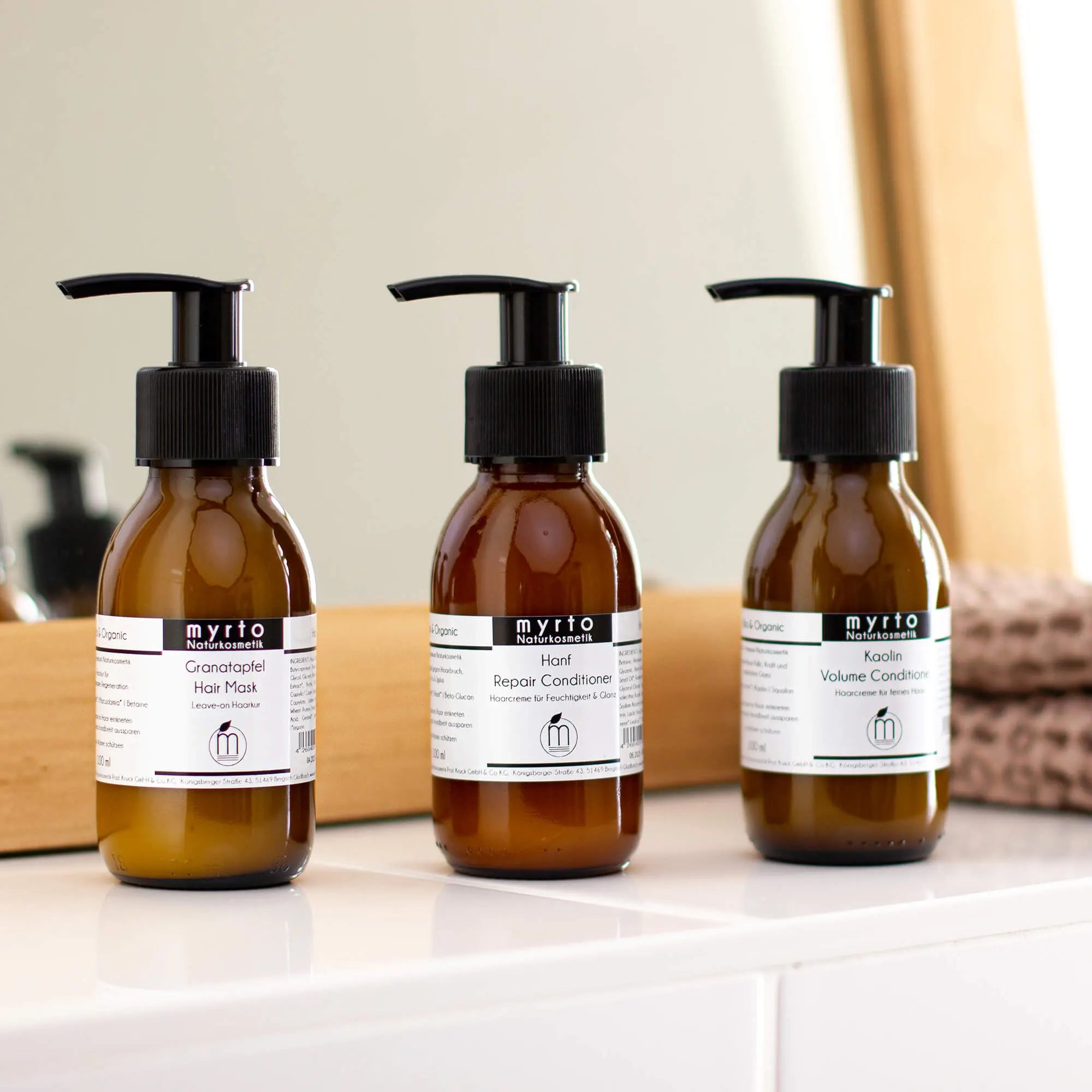
Plant-based sunscreen
Sun promotes joie de vivre, activates the metabolism and stimulates our immune system. Sunlight is essential for supplying our body with vitamin D. Vitamin D prevents the calcium level in the blood from falling. It is involved in the metabolism of calcium and phosphate and thus ensures healthy bone formation. Studies suggest that vitamin D may also protect against pathogens.
However, staying in the sun for too long without additional UV protection can cause painful sunburn and also damage the skin in the long term. This can lead to leathery skin, wrinkles, pigment spots or even skin cancer. When sunbathing, as well as during extensive outdoor activities, sensible sun protection is therefore essential.
Chemical sunscreen filters
According to EU regulations, sun creams must contain either chemical or mineral sun protection filters. Chemical sun protection filters penetrate the skin, chemically convert UV radiation into heat radiation and decompose in the skin. They are known to potentially trigger allergies, promote skin blemishes or make the skin hypersensitive to solar radiation (keyword: Mallorca acne, sun allergy). Most sun protection products contain several sun protection filters in a complex, so it is almost impossible to find the ingredient that triggers the allergy. In addition, chemical UV filters can demonstrably act like estrogens in the body, impair the quality of male sperm or damage DNA genetic material. The chemical UV filters that you should definitely avoid include the following:
- Octocrylene INCI: (Octocrylene)
- Oxybenzone (INCI: Benzophenone-3)
- Sulisobenzone (INCI: Benzophenone-4)
- Padimate O (INCI: Octyldimethyl PABA / Ethylhexyl Dimethyl PABA)
- Amiloxate (INCI: Isoamyl p-Methoxycinnamate)
- Octinoxate (INCI: Ethylhexyl Methoxycinnamate or Octyl Methoxycinnamate)
- Homosalate (INCI: Homomenthyl Salicylate)
- Enzacamen (INCI: 4-Methylbenzylidene Camphor)
Chemical sunscreen filters as an environmental problem
The mass use of sunscreens and sun oils with chemical UV filters is having an increasingly destructive effect on our environment. The chemical UV filter oxybenzone, for example, which is contained in over 80% of sunscreens, does not dissolve in water and is not biodegradable. Instead, due to its high density, it sinks to the seabed and accumulates on coral reefs. Researchers believe that oxybenzone is partly responsible for the death of corals. They suspect that the UV filter covers the previously colorful corals with a film and discolors them. A 2017 study observed the development of some coral reefs in the South China Sea over a longer period of time. Oxybenzone was detected in over 20% of all corals there. Strange deformities were noticed in the soft tissue of corals, some of which subsequently died. However, corals are generally very sensitive. They are also suffering from increasing marine pollution by petroleum and rising water temperatures.
Mineral sunscreen filters
A better choice than chemical UV filters are sunscreen products with mineral UV filters. These consist of microfine particles that reflect light like a mirror. Mineral filters are extremely skin-friendly and photostable, i.e. the reflective particles remain on the skin and are proven not to cause irritation or sensitization. Zinc oxide (INCI: Zinc Oxide) and titanium dioxide (INCI: Titanium Dioxide) are used as mineral sunscreen filters. While titanium dioxide primarily protects the skin from damaging UVB radiation, zinc oxide offers the highest UVA protection. Zinc oxide is an excellent broad-spectrum UVA/UVB absorber and is considered the UV filter with the broadest spectrum.
According to EU guidelines, all sunscreens should have UVA protection that corresponds to at least one third of the specified sun protection factor (this always refers to UVB). Mineral and chemical UV filters generally do not work against cell-damaging infrared radiation. The best possible protection against IR radiation is provided by plant-based antioxidants. They intercept free radicals, stimulate the skin's own repair mechanisms and prevent pigment spots.
What are the disadvantages of mineral sunscreen?
Like chemical sunscreen filters, mineral UV protection on the skin hinders the body's own production of vitamin D. Therefore, you should not use mineral sunscreen products on a daily basis.
Mineral sunscreen is usually harder to spread on the skin and leaves a more or less visible white film on the skin if the particle size is above approx. 400 nm.
Mineral nanoparticles are therefore increasingly being used. According to the EU Cosmetics Regulation, these must be labelled as "nano" on the ingredients list. In order to avoid this rather off-putting declaration, the mineral particle sizes in sunscreens have been continually reduced for years - down to the limit range of just over 100 nanometres, which is subject to declaration. This leads to a more transparent appearance and a significantly more pleasant application behaviour of the mineral sunscreen.
One problem: From a production point of view, a variation in particle size cannot be avoided during production. Therefore, even with otherwise much larger particles in sun protection filters that are declared as "non-nano" in accordance with EU guidelines, the nano content can be over 30% depending on the batch, as can be seen from the available manufacturer analysis certificates.
Why are nanoparticles in sunscreen problematic?
Nanoparticles have a size of 1 to 100 nanometers. They are insoluble and biopersistent, which means they cannot be broken down in our organism. Due to its tiny size, nano-titanium dioxide can penetrate the protective skin barrier into the dermis, enter our body and also the bloodstream, as a study from 2016 showed. The probability is of course lower in healthy, resilient skin than in vulnerable children's skin, in cases of weakened skin barriers such as neurodermatitis, eczema, rosacea or even sunburn.
Researchers have observed in animal experiments that nanoparticles can cause inflammation and organ damage in the body. Titanium dioxide in particular is considered problematic. In 2017, a French study in animal experiments confirmed a link between nano-titanium dioxide and severe intestinal inflammation and even colon cancer. In France, titanium dioxide (E171) has been banned in food since 2019. There are currently no studies on the long-term effects on humans for either nano-titanium dioxide or nano-zinc oxide. According to the EU's standard contractual clauses, there is no evidence of the absorption of zinc oxide nanoparticles through the skin. It therefore remains unclear whether nanoparticles can be deposited in human tissue and have a toxic effect there.
Plant-based sunscreen without nanoparticles
Many plants provide protection against excessive UV radiation in their natural environment. Some plant oils therefore have a natural UV filter. Argan oil has an SPF of around 3, olive oil an SPF of around 5, jojoba, sesame oil and shea butter have a natural SPF of around 6. Karanja oil is an exception, with an extremely high plant SPF of 30+. Plant oils with a high SPF offer high UVB protection, but only relatively low UVA values. They cannot therefore completely replace sunscreens with high broad-spectrum UV protection. However, when it comes to light sun protection with sufficient UV permeability so that the body can produce enough vitamin D, plant oils with a natural SPF are the ideal alternative.
myrto sun protection
Sunshine Day Oil is ideal for daily use, especially for very sensitive skin. Sunshine Day Oil is free of skin-weakening emulsifiers, fragrances and other additives. It is quickly and completely absorbed by the skin without leaving a greasy feeling. According to studies, the two main ingredients of Sunshine Day Oil, karanja oil and avellana oil, have an SPF of approx. 10+, and karanja oil even has an SPF of approx. 30+. They absorb damaging ultraviolet radiation and have skin-care, healing and antioxidant effects. The often underestimated, sufficient supply of vitamin D to the body is not affected. Sun protection is enhanced by plant-based antioxidants from schizandra, astaxanthin and sea buckthorn, which are also able to neutralize the cell-damaging effects of infrared radiation.
They form a defensive shield against free radicals, which are increasingly produced in the human body by excessive solar radiation and, according to recent findings, are mainly responsible for premature skin aging.
According to EU cosmetics regulations, sun protection products must contain either a mineral or chemical filter. Since karanja oil is a purely plant-based sunscreen that contains neither chemical nor mineral UV filters, no SPF may be stated on the product. For extended sunbathing or outdoor sports activities in the sun, we recommend an additional mineral sunscreen over the Sunshine Day Oil for increased UVA protection, depending on your skin type.
This is especially true for sun protection in the snow. The sun may be weaker in winter, but the rays are reflected and the skin reacts more sensitively. If possible, make sure that your mineral sunscreen product does not contain nanoparticles or titanium dioxide.
myrto Anti-Pollution Serum
If you do get sunburned, avoid the sun until the sunburn has completely healed. Help your reddened, irritated skin with cooling compresses and also provide it with moisturizing nutrients. The Anti-Pollution Moisturizer Serum based on aloe vera gel contains ectoin, which protects the DNA of the skin cells from damage. Low molecular weight hyaluronic acid provides deep moisture and has an anti-inflammatory effect. Purely plant-based antioxidants stimulate cell regeneration.
Is a sunscreen SPF 30 twice as effective as SPF 15?
A sunscreen with a sun protection factor of 10 lets 1/10 of the UV radiation through, so it blocks 90% of UV radiation. SPF 15 blocks around 93% of the sun's radiation, SPF 30 around 97%. A sunscreen with SPF 50 offers 98%, which is slightly more sun protection than SPF 30. There are actually no sun creams that don't let any UV radiation through at all. The product name "sunblocker" has now been banned in the EU because it is misleading.





